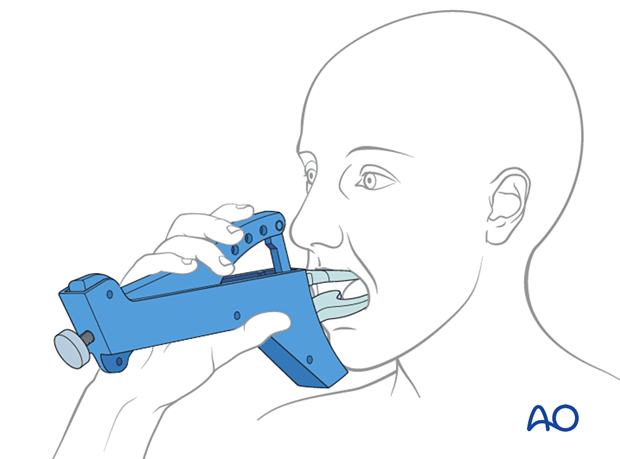ORIF, two load sharing plates
1. Principles
Biomechanics
Basal triangle fractures should be considered as comminuted fractures requiring load-bearing fixation across the basal triangle. Load bearing can be provided one of two ways:
1. Use of one load-bearing plate
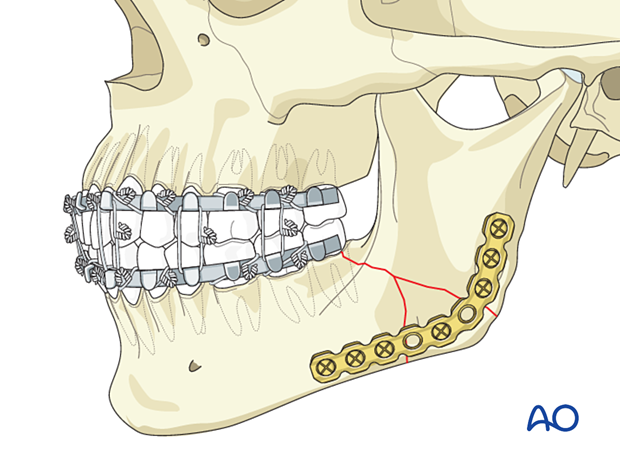
2. Using two load-sharing plates, the one along the inferior border must be a heavy mandible plate (eg, 2.0 locking reconstruction plates).
Locking screws/plate systems should be used whenever available.
The plate should be selected so that screws can be inserted an adequate distance from the fracture line.
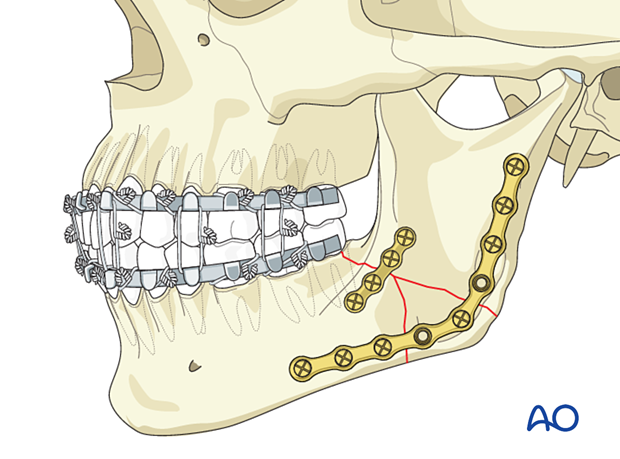
Sequence
The superior plate is inserted first to achieve preliminary stablization. This sequence will prevent inadvertent displacement of the fragments during subsequent contouring and the insertion of the inferior border plate.
Other considerations
Following special considerations may need to be taken into account:
Click on any subject for further detail.
2. Patient preparation
This procedure is typically performed with the patient placed in a supine position.
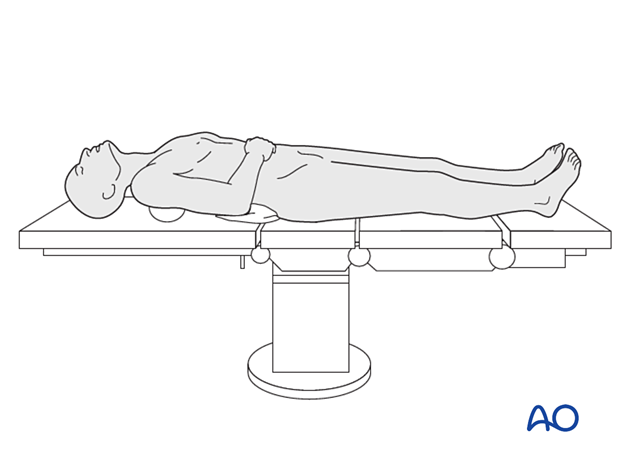
3. Approach
For complex fractures of the mandibular angle, the transoral approach to the angle can be selected by those surgeons experienced in the technique of placing a large plate at the inferior border of the mandible using transbuccal trocar instrumentation or an angulated screwdriver.
Incision A (vestibular incision) can be used when there is no third molar present, or when there is an unerupted third molar that may or may not require removal.
Incision B is used when there is an erupted third molar that must be removed during surgery. Incision B allows the development of a buccal mucoperiosteal flap that can be advanced to cover the extraction socket.
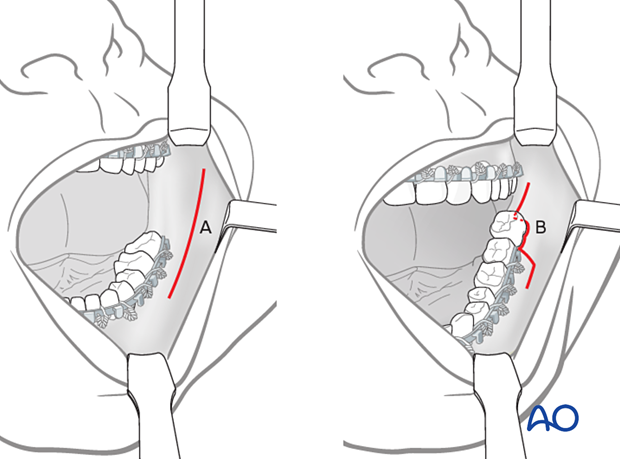
However, a transcutaneous approach (the submandibular approach) is often chosen because this access provides a better access. Existing lacerations may also be used.
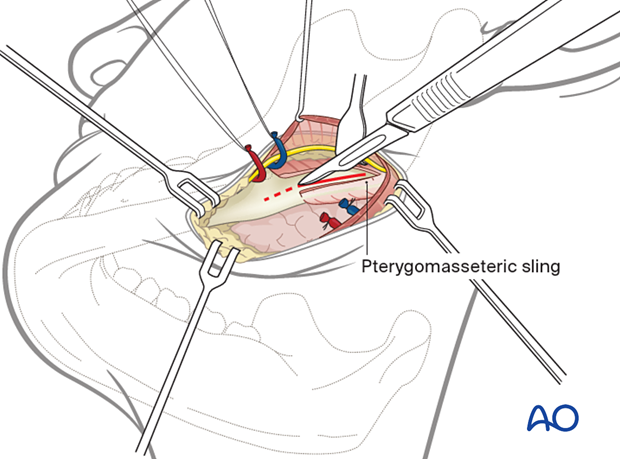
4. Reduction
Open reduction and stable internal fixation in dentate patients begin with fixation of the occlusion. Before placing the patient into MMF, the fracture should be exposed, and any extractions deemed necessary performed. The superior border of the fracture through the angle should also be reduced before placing them into MMF.
- Further details on methods for applying MMF.
It is beneficial to have the basal triangle reduced at this stage.
5. Simplification
Simplifying the fracture
A 2.0 miniplate is applied along the mandible's superior border to maintain the alignment and reduction of the major fragments while the inferior border plate is adapted and applied.
The miniplate can be placed either on the mandible's lateral surface or along the inside of the external oblique ridge, similar to the treatment of a simple mandibular angle fracture.
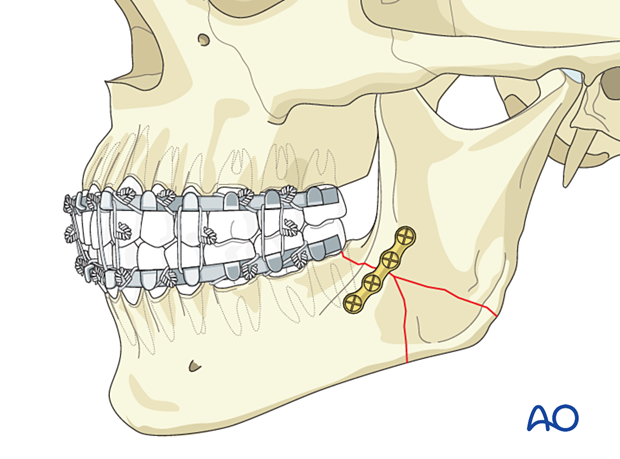
Drill first screw hole
Hold the plate with an appropriate instrument (eg, periosteal elevator or forceps).
Use a 1.5 mm drill bit to drill through the plate hole next to the posterior fragment's fracture line.
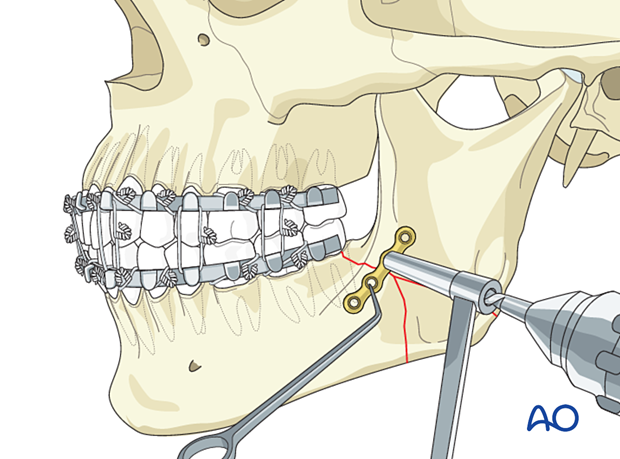
Insert the first screw
Insert a 2.0 mm screw of appropriate length. Do not fully tighten it until the final reduction and plate position are confirmed.
A periosteal elevator is used to drag the plate and ramus anteriorly, closing the fracture gap.
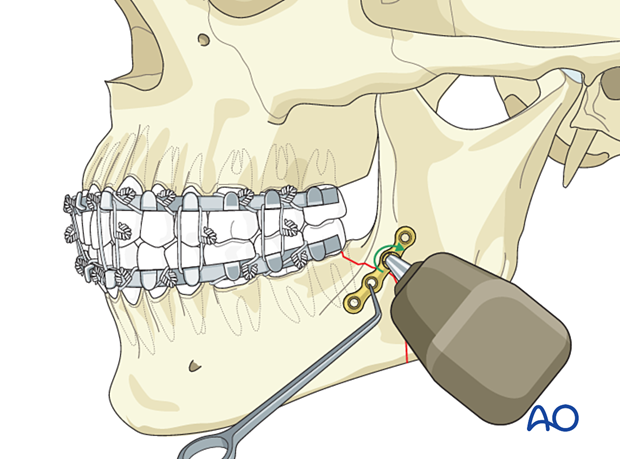
Insert the second screw
Insert the second screw in the hole next to the fracture line in the anterior fragment and tighten it.
Then, tighten the first screw.
Confirm fracture reduction.
In case reduction is lost during screw tightening, the plate will need to be re-bent to sit passively on the reduced mandible.
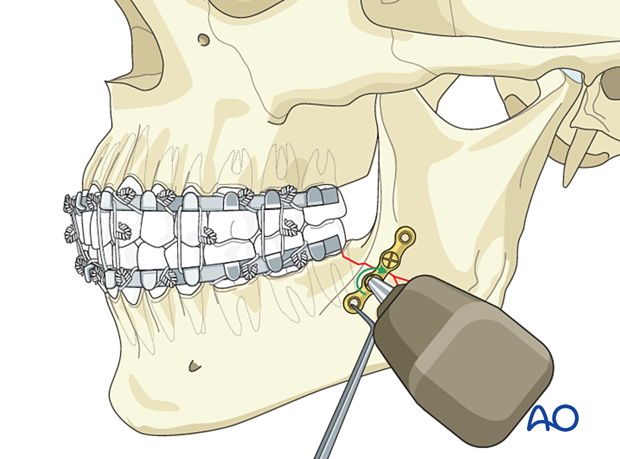
Additional screw placement
Fill the remaining plate holes with screws.

6. Lower border fixation
Choice of implant for the inferior border plate
Only large profile plates meet the biomechanical requirements of basal triangle fractures.
One of the following plates should be considered for fixation at the inferior border. The chosen plate should allow for fixation of the basal triangle to the plate if large enough. In this case, plates with a center space cannot be used.
- 6- to 8-hole large profile locking plate 2.0 (straight or prebent)
- 6- to 8-hole extra-large profile locking plate 2.0
Screw application is commonly bicortical.
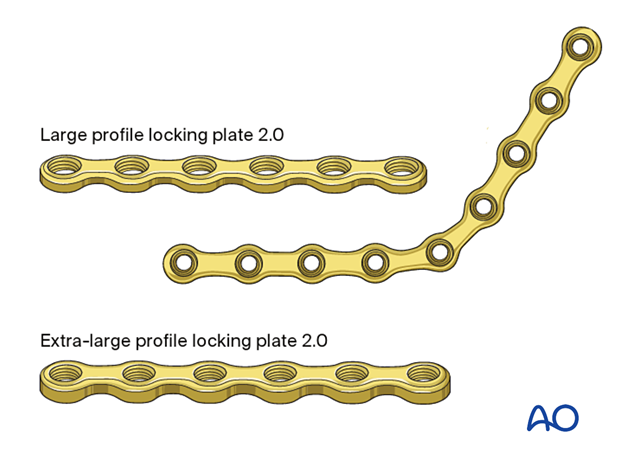
Plate adaptation
The plate must be contoured to the mandible's lateral surface, flush with the inferior and posterior borders to avoid injuring the inferior alveolar nerve.
Plate adaptation is made similarly to the detailed description of plate bending of the locking reconstruction plate.
Securing the plate to the bone using bone clamps (transcutaneous approach)
Through the transcutaneous approach, insert the properly contoured plate onto the lateral surface of the mandible and hold it there using forceps.

Inserting screws
The sequence of screw insertion is not important if the plate is securely clamped to the bone. Drill guides should be used to center the screw within the plate hole.
Large fragments (like the triangular one in this illustration) can be secured to the plate to hold them in position. A locking screw is a better choice for this purpose.

7. Final check
Release the MMF and check the occlusion for accuracy and the bony surfaces for precise anatomic reduction.
The transcutaneous incision is then closed in layers.
8. Aftercare following ORIF of mandibular symphysis, body, angle, and ramus fractures
Use of jaw bra
If significant degloving of the soft tissues of the mandible has occurred, there may be a consideration for using a jaw bra or similar support dressing.
Arch bars
If arch bars or MMF screws are used intraoperatively, they are usually removed at the conclusion of surgery if proper fracture reduction and fixation have been achieved. Arch bars may be maintained postoperatively if functional therapy is required or if required as part of the fixation.
X-Rays
Postoperative x-rays are taken within the first days after surgery. In an uneventful course, follow-up x-rays are taken after 4–6 weeks.
Follow up
The patient is examined approximately 1 week postoperatively and periodically thereafter to assess the stability of the occlusion and to check for infection of the surgical wound. During each visit, the surgeon must evaluate the patient's ability to perform adequate oral hygiene and wound care and provide additional instructions if necessary. Many patients need to be seen regularly for replacement of their intermaxillary elastics and to encourage range of motion in their TMJ in the later course of the treatment.
Follow-up appointments are at the discretion of the surgeon and depend on the stability of the occlusion on the first visit. If a malocclusion is noted and treatable with training elastics, weekly appointments are recommended.
The patient should be warned to continue routine follow up with their dentist. Fractures near the dental roots can often result in delayed loss of tooth viability, requiring periapical films and additional dental procedures.
Malocclusion
If a malocclusion is detected, the surgeon must ascertain its etiology (with appropriate imaging technique). If the malocclusion is secondary to surgical edema or muscle splinting, training elastics may be beneficial. The lightest elastics as possible are used for guidance, because active motion of the mandible is desirable. Patients should be shown how to place and remove the elastics using a hand mirror.
If the malocclusion is secondary to a bony problem due to inadequate reduction or hardware failure or displacement, elastic training will be of no benefit. The patient must return to the operating room for revision surgery.
Basic postoperative instructions
DietDepending upon the stability of the internal fixation, the diet can vary between liquid and semi-liquid to “as tolerated”, at the discretion of the surgeon. Any elastics are removed during eating.
Patients having only extraoral approaches are not compromised in their routine oral hygiene measures and should continue with their daily schedule.
Patients with intraoral wounds must be instructed in appropriate oral hygiene procedures. The presence of the arch-bars and any elastics makes this a more difficult procedure than normal. A soft toothbrush (dipping in warm water makes it softer) should be used to clean the surfaces of the teeth and arch-bars. Any elastics are removed for oral hygiene procedures. Chlorhexidine oral rinses should be prescribed and used at least three times each day to help sanitize the mouth. Chlorohexidine may cause staining of the teeth and should not be used longer than necessary. For larger debris, a 1:1 mixture of hydrogen peroxide (0.25%)/chlorhexidine (0.12%) can be used. The bubbling action of the hydrogen peroxide helps remove debris. A water flosser, providing a water jet, is a very useful tool to help remove debris from the wires. If a this is used, care should be taken not to direct the jet stream directly over intraoral incisions as this may lead to wound dehiscence.
Physiotherapy can be prescribed at the first visit and opening and excursive exercises begun as soon as possible. Goals should be set, and, typically, 40 mm of maximum interincisal jaw opening should be attained by 4 weeks postoperatively. If the patient cannot fully open his mouth, additional passive physical therapy may be required such as Therabite® or tongue-blade training.
